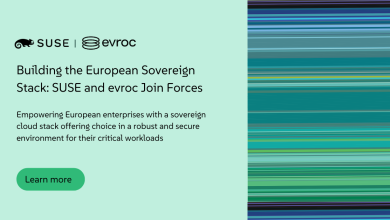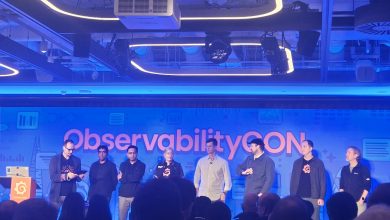
In today’s rapidly evolving technological landscape, businesses increasingly recognize the importance of transforming their IT infrastructure to stay competitive and meet the demands of the digital age. One individual who has garnered attention for his innovative strategies in this realm is Elinadav Heymann. Through his visionary approach, Heymann has provided invaluable insights into how organizations can effectively navigate the complexities of IT infrastructure transformation. This article delves into Heymann’s strategies, comprehensively analyzing their implications for businesses striving to adapt and thrive in a digitally driven world.
Understanding the Need for Transformation
At the heart of Heymann’s approach lies a deep understanding of the imperative for IT infrastructure transformation. He emphasizes that in today’s hyper-connected world, traditional IT setups often need to be improved to support the demands of modern businesses. Legacy systems may need more scalability, agility, and resilience to respond effectively to rapidly changing market dynamics. Heymann underscores recognizing this need for transformation as the first step toward driving meaningful organizational change.
Heymann further stresses that embracing transformation isn’t merely about keeping up with trends; it’s about staying competitive and relevant in an increasingly digital landscape. Organizations must acknowledge that clinging to outdated IT structures can hinder growth and innovation. By recognizing the need for transformation, businesses can proactively adapt to evolving market conditions, enhance operational efficiency, and deliver better customer value. It’s not just a matter of upgrading technology; it’s about cultivating a mindset of continuous improvement and innovation to thrive in today’s dynamic business environment.
Embracing Cloud Technology
Central to Heymann’s strategies is embracing cloud technology as a catalyst for IT infrastructure transformation. He advocates leveraging cloud computing services to enhance flexibility, scalability, and cost-efficiency. By migrating critical workloads to the cloud, organizations can unlock new levels of agility and innovation while reducing the burden of managing on-premises infrastructure. Heymann’s approach involves a meticulous assessment of workload suitability and a phased migration strategy to minimize disruption and maximize benefits.
Moreover, Elinadav Heymann emphasizes the importance of robust cloud security measures to safeguard sensitive data and maintain regulatory compliance. He underscores the need for continuous monitoring and proactive threat detection to mitigate potential risks associated with cloud adoption. By integrating security measures into every stage of the migration process, organizations can build a resilient cloud environment that inspires trust and confidence among stakeholders. Heymann’s holistic approach to cloud technology encompasses its transformative potential and critical role in ensuring the integrity and security of digital assets.
Prioritizing Security and Compliance
In an era marked by escalating cybersecurity threats and stringent regulatory requirements, Heymann stresses the critical importance of prioritizing security and compliance throughout the IT infrastructure transformation. He advocates for robust security measures and a proactive threat detection and mitigation approach. Moreover, Heymann emphasizes aligning IT transformation initiatives with relevant regulatory frameworks to ensure adherence to compliance standards and mitigate legal risks.
Heymann’s emphasis on prioritizing security and compliance underscores the need for organizations to adopt a proactive stance in safeguarding their digital assets and maintaining regulatory adherence. He emphasizes implementing robust security measures and fostering a culture of awareness and vigilance among employees to mitigate the evolving landscape of cybersecurity threats. Additionally, Heymann advocates for regular audits and assessments to ensure ongoing compliance with industry regulations and standards. By integrating security and compliance considerations into every phase of the IT infrastructure transformation journey, organizations can enhance resilience, minimize risk, and build stakeholder trust. Heymann’s approach reflects a comprehensive understanding of the interconnected nature of security, compliance, and successful digital transformation initiatives.
Cultivating a Culture of Innovation
Heymann believes successful IT infrastructure transformation goes beyond technological upgrades; it necessitates a cultural shift towards innovation and collaboration. He emphasizes fostering a culture that values experimentation, continuous learning, and cross-functional collaboration. Heymann encourages organizations to empower employees to embrace change, challenge the status quo, and contribute their insights toward driving meaningful transformation initiatives.
Leveraging Data as a Strategic Asset
Heymann underscores the transformative potential of leveraging data as a strategic asset in today’s data-driven landscape. He advocates for implementing robust data management practices and harnessing advanced analytics capabilities to derive actionable insights. By unlocking the value of data, organizations can gain a competitive edge, enhance decision-making processes, and fuel innovation across all facets of their operations. Heymann’s approach involves establishing a comprehensive data governance framework and leveraging emerging technologies such as artificial intelligence and machine learning to extract maximum value from data assets.
Sustaining Momentum Through Continuous Improvement
Heymann emphasizes that IT infrastructure transformation is not a one-time endeavor but an ongoing journey toward continuous improvement and innovation. He advocates for establishing mechanisms to monitor performance, solicit feedback, and iterate on strategies iteratively. By fostering a culture of continuous improvement, organizations can adapt to evolving market dynamics, seize emerging opportunities, and stay ahead of the curve in an ever-changing technological landscape.
Conclusion
In conclusion, Elinadav Heymann’s strategies offer invaluable insights into navigating the complexities of IT infrastructure transformation in the digital age. By understanding the imperative for transformation, embracing cloud technology, prioritizing security and compliance, cultivating a culture of innovation, leveraging data strategically, and sustaining momentum through continuous improvement, organizations can effectively navigate the challenges and seize the opportunities presented by the evolving technological landscape. Heymann’s visionary approach is a guiding beacon for businesses striving to transform their IT infrastructure and unlock new agility, resilience, and innovation levels in today’s hyper-connected world.






